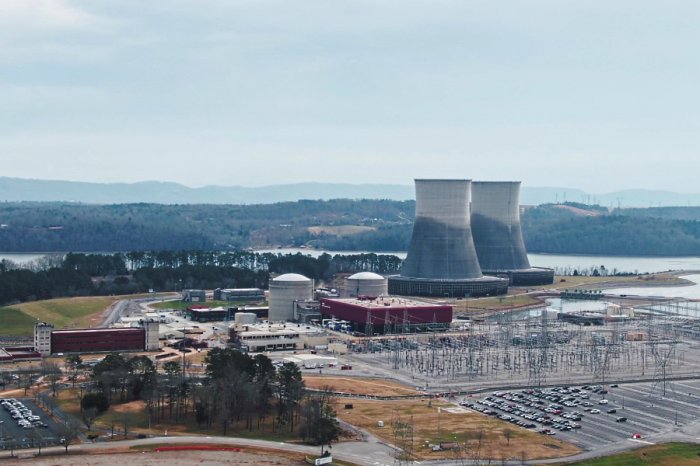After receiving the necessary documents and project presentation, our team will try to review your request as soon as possible, and leading experts will offer the best options for project funding.
However, the growth of the world economy and its impact on private investment in the next decade will largely depend on the consequences of the epidemic, the advent of a new industrial age and geopolitical changes.
According to UNCTAD, the general industry trend today is towards shorter value chains, greater concentration of value added, and a reduction in international investment in productive physical assets. This implies a greater challenge for developing countries and young companies that compete to attract investment to finance their projects and improve business processes.
On the other hand, the current situation on the global chessboard opens up new opportunities to attract investment and improve domestic infrastructure in dozens of countries that could potentially become important economic players in this decade.
The recently lifted quarantine measures have caused enormous damage to many investment projects.
The tectonic changes in Eurasia that followed in 2022 as a result of war in Ukraine disrupted many supply chains and meant millions in losses for a number of businesses in the EU and beyond. All this shocked the world economy and had an impact on the ability of companies to invest in large projects.
It is clear that the role of private investment, project finance instruments and innovative flexible financial models is now more important than ever, which could increase business access to long-term capital.
Private investment opportunities for large projects
The range of tools, schemes and methods for using private investment for large projects is extremely wide today.A wide range of options can lead to the construction of complex capital structures, which include both long-term loans issued by private investors, and multifaceted project finance (PF) models involving banks, funds, companies and even international financial institutions.
Many large projects that were previously financed and managed exclusively by the state are now being implemented more efficiently by attracting private capital, which has led to the flourishing of the so-called public-private partnership. Below we have briefly reviewed some private investment opportunities for large projects that are applicable to almost all sectors of the economy.
Project finance
Project finance is a financial instrument that allows long-term financing of infrastructure projects (seaports, bridges, roads, pipelines), industrial projects (plants, factories) or public projects with a limited financial structure.In the case of a PF, the capital that is used to develop the project is received against future cash flows from the project.
The structure of project finance mainly depends on the future flow of the project, which has its own assets, contracts, rights and collateral. This instrument is becoming more and more attractive to the public and private sectors, since the PF is off-balance sheet and is not considered a debt obligation of a company, government or municipality. Thanks to this, the solvency of the project proponents is not affected, and the company or government can carry out multiple projects at the same time.
Since the special purpose vehicle (SPV which is a formal debtor) begins to pay off debts to creditors only after the project is put into operation, debt service is usually not required during the entire construction period.
At this stage, the investment project is characterized by a very high risk, which explains the relatively high cost of project finance (on average 20-30% higher compared to traditional loans).
The cash flow of the project later compensates for the risks assumed.
The construction of large and expensive facilities through project finance requires a thorough and comprehensive analysis of the project itself, as well as the specific companies and governments that may be involved in the project, in order to confirm their reliability. The high costs associated with the organization of project finance schemes make this tool suitable only for large investment projects valued at tens and hundreds of millions of euros. Very often, such projects are the construction of large utility-scale power plants, mines and mining and processing plants, large industrial plants, LNG infrastructure and other oil and gas projects.
In the social sector, governments and municipalities often use project finance tools to develop projects in the areas of health, environment and transport.
Loans from private investment funds
An investor can be called any company, organization or individual who invests his capital in projects of varying degrees of risk in order to make a profit in the future.Since many young companies do not have access to sufficient bank loans to implement capital-intensive projects, it makes sense to attract private investors who can help both financially and advisory.
In developing countries, private investors and investment funds prefer projects with a minimum level of risk, while they expect that the income will exceed the initial investment by 20, 30 or even 50%. To interest a potential investor, the project initiators must show him that investing in a particular business is accompanied by minimal risk with high returns.

The search for a private investor or investment fund should be conducted simultaneously in several directions.
You can also contact the financial team of GCAM Investment Group, which offers private capital to finance large projects in industry, the energy sector, the oil and gas sector, agriculture and a number of other industries around the world.
Our professional support will make long-term financing of your business smoother and more reliable.
The search for private investors for large projects includes the following:
• Appeal to government authorities. Perhaps the host country maintains an appropriate business incubator or technology park. In many cases, governments and municipalities provide comprehensive assistance to entrepreneurs if the project is in the interests of the national economy or contributes to the development of a particular region.
• Search for private investors through industry experts or brokers, many of whom are well versed not only in the field of lending, but also in investments and project management.
• Independent search for investors at exhibitions, various presentation events corresponding to a specific industry direction or investment in general.
When starting a business project from scratch, it can be more difficult to find a loan from private investment fund.
At the initial stage, it is critical to show potential investors that your business idea is working and bearing fruit. A comprehensive business plan and feasibility study will help the initiators of the project to cope with this rather difficult task. If you do not have a plan yet and you are not ready to draw it up yourself, contact our specialists for details.
For the implementation of large investment projects, it is recommended to attract private investors from specialized communities.
In such communities, it is easy to find experienced industry professionals who can not only participate in the financing of the project, but also help increase profits through their knowledge and expertise. And at the stage of the birth of a business, such advice can be even more important than financing.
Private equity funds
Private equity funds are a type of alternative investment vehicle that provides private capital that is not traded on the stock market.These funds are characterized by investing directly in the purchase of companies listed on the stock market, but which, after the acquisition, are taken off the market.
These companies are funded by equity contributions from institutional and small private investors and use their resources to fund new technologies, acquire promising assets, increase working capital and improve the company's balance sheet. One of the advantages of this instrument is the fact that these types of funds are an excellent option for offering capital financing alternatives for young companies and emerging industries. The disadvantage of these funds is that when investing in companies that are not listed on the stock market, their evaluation becomes more complicated.
Some of the benefits of a private equity fund are listed below:
• The fund offers alternative access to liquidity for struggling companies or start-ups whose traditional funding tools are expensive or even unavailable.
• Since this is funding that does not need to be registered in either the stock market or the traditional financial system, the formal pressure on the management of companies receiving capital is greatly reduced.
The private equity fund also has disadvantages listed below:
• The fund's investments are illiquid because the shares of the acquired companies are not traded on the stock exchange, making them difficult to value.
• Any sale or purchase of shares takes place outside regulated markets such as the stock market. Since these are simply negotiations between interested parties, the risk can be high.
• The rights of a shareholder at the time of the acquisition of shares are determined by the company's charter, which is not always consistent with good corporate governance practice.
The fund usually consists of limited partners and general partners, who have full responsibility for the fund and are responsible for its management. and operations.
The fund's management selects the most attractive projects and companies, investing in them to obtain maximum profit for partners.
Public-private partnership (PPP)
PPP is a long-term cooperation on a contractual basis between public authorities and the private sector, aimed at the implementation of an investment project with a strong social component.In this partnership, the private sector assumes significant risk and is responsible for the construction of the facility and the provision of the corresponding socially significant good or service.

The benefits of a public-private partnership are as follows:
• Many large projects demonstrate that the private sector delivers services more efficiently than the public sector, including by reducing project life cycle costs.
• PPPs are usually funded largely or wholly by the private resources of a private company, allowing the government to direct its limited funds to other socially significant projects.
• Attracting private capital to strategic projects provides a critical technical advantage, as market leaders know a lot about technological innovations and usually invest heavily in research and development.
• The implementation of an investment project based on PPP allows participants to optimize, minimize and balance the risk between the public and private sectors. The benefit to taxpayers is that PPPs reduce the risk of financing useless projects that are built purely for political reasons.
• Operation and maintenance of facilities is usually carried out at a high level. In addition to the high efficiency of the project, the advantage is that at the end of the contract period the infrastructure will be handed over to the state owner in good condition.
Currently, tens of thousands of P3 projects worth tens of trillions of dollars are being implemented in the world. For example, in China on the eve of the pandemic, there were more than 14,000 such projects worth a total of $2.7 trillion (many of them in housing construction). A significant part of them falls on infrastructure and transport, but other areas are also represented.
L&T Metro Rail (Hyderabad, India) has become the largest public-private partnership project implemented in the metro construction industry. Valued at US$4 billion in Phase 1, the project was also a record-breaking green transport investment in India.
Among the major socially significant PPP projects are, for example, the construction of the McGill University Health Center in Canada, which was opened in 2015 and costs participants a total of about $1.3 billion.
Impact investing
So-called impact investing is aimed at obtaining specific social or environmental benefits in addition to financial benefits.As one of the leading mechanisms for attracting private capital, impact investing uses money for investments that create a positive social impact.
The strategy of modern impact investment funds is to invest in facilities, organizations or companies that improve the lives of communities or introduce environmentally friendly technologies. There are various types of impact investment funds that seek to participate in developing countries because they believe they can achieve the best social outcomes there. In turn, the returns that these funds demand from their investments usually do not exceed market returns.
Some examples of industries in which these funds invest are healthcare, education, energy production and distribution (especially clean and renewable energy), and agriculture.
In 2019, more than 15,000 impact investment projects worth $37 trillion were planned, demonstrating growth of 10-15% annually. There is every reason to expect this trend to continue.
If you need large investments or project finance, please contact our specialists.




























